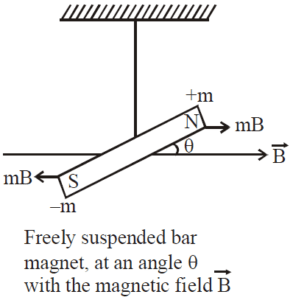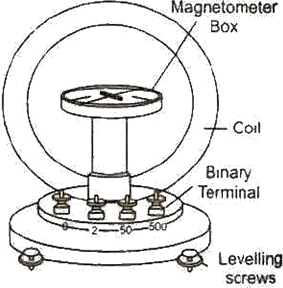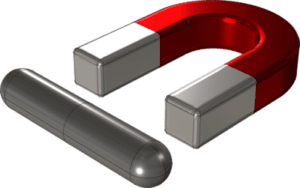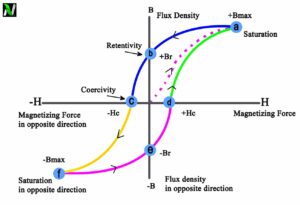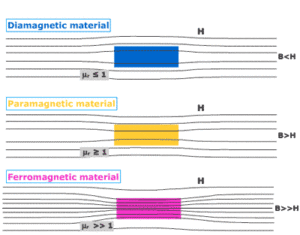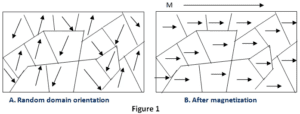In this article, we will discuss why does diamagnetism occurs or what is the origin of diamagnetism. So let’s get started…
First of all, let’s briefly discuss what is diamagnetism?
What is diamagnetism?
Diamagnetism is the property of the material in which when they are exposed to the magnetic field, then it is repelled by that field. An applied magnetic field induced a magnetic field in them in the opposite direction, causing a repulsive force.
In contrast to the other magnetic materials such as paramagnetic and ferromagnetic materials. They are attracted by a magnetic field.
Diamagnetism is a quantum mechanical effect that occurs in almost all materials; when it is the only contribution to the magnetism, the material is called diamagnetic.
As mentioned above that diamagnetism occurs in all materials, which means it also occurs in paramagnetic and ferromagnetic materials.
In paramagnetic and ferromagnetic substances, the weak diamagnetic force is overcome by the attractive force of magnetic dipoles in the material. The magnetic permeability of diamagnetic materials is less than the permeability of vacuum, μ0.
Diamagnetism was first discovered when Anton Brugmans observed in 1778 that bismuth was repelled by magnetic fields. In 1845, Michael Faraday proved this to be a property of matter and concluded that every material responds (diamagnetically or paramagnetically) to a field of applied magnetism. [latexpage]
At William Whewell’s suggestion, Faraday first referred to the phenomenon as diamagnetic (the prefix dia means through or across) and then changed it to diamagnetism.
Diamagnetism definition: It is property of the materials in which when they are exposed to the magnetic field they are feebly repelled by that magnetic field.
In others words, these are those materials which develops feeble magnetisation in the opposite direction of the magnetising field. Due to this, it is repelled by the magnets and tends to move from stronger part to the weaker part of the field.

Suggested reading:
- Classification of magnetic material with examples class 12
- Magnetic moment of atoms, electrons, nucleus, molecules, and elementary particles
Origin of diamagnetism class 12
Origin of diamagnetism
In the atoms of some materials like Bi, Cu, Pb. The magnetic moment is due to different electrons canceling out each other. In such atoms, electrons occur in pairs that one revolving anticlockwise while the other revolving clockwise around the nucleus. The net magnetic moment due to this revolution is zero.
When such atoms are placed in a magnetic field, the speed of revolution on one electrons increases while others decrease. The magnetic field of the former electrons increases to $\vec{m}+\Delta\vec{m}$, and of the latter electrons decreases to $\vec{m}-\Delta\vec{m}$.
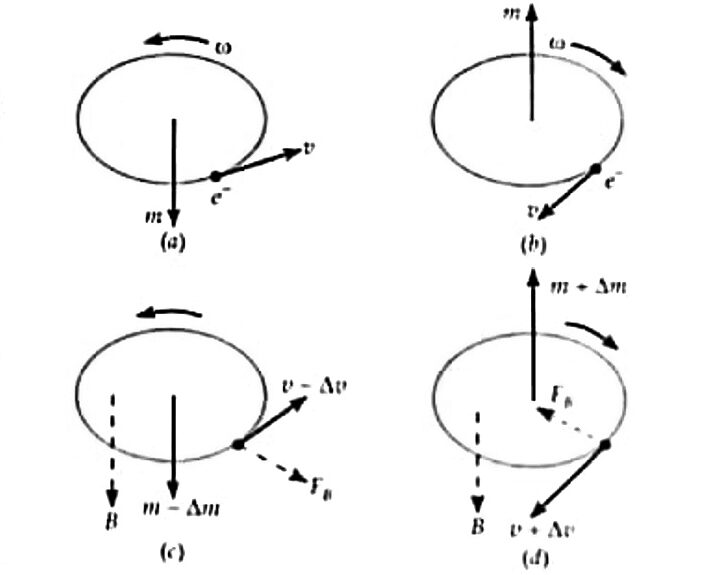
So due to this, each electrons pair acquired the net magnetic moment $2\Delta{\vec{m}}$, which is proportional to the magnetic field $\vec{B}$ but it points in the opposite direction of the applied magnetic field.
A sufficient magnetic moment is induced in the diamagnetic material in the opposite direction of $\vec{B}$. So due to this, this type of material slowly moves towards the weaker part of the magnetic field i.e diamagnetic material is repelled by the magnetic field.
| The behavior of the diamagnetic material is independent of the temperature. |
Stay tuned with Laws Of Nature for more useful and interesting content.

